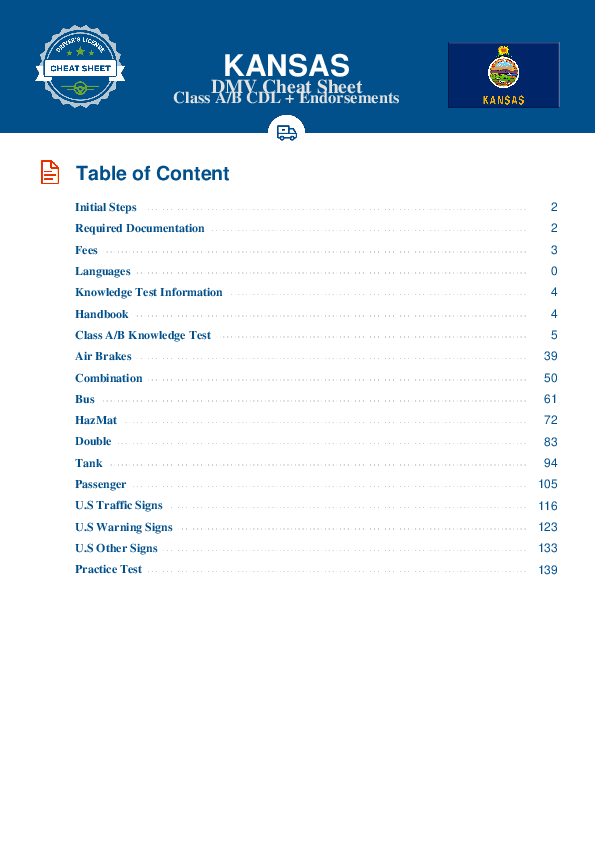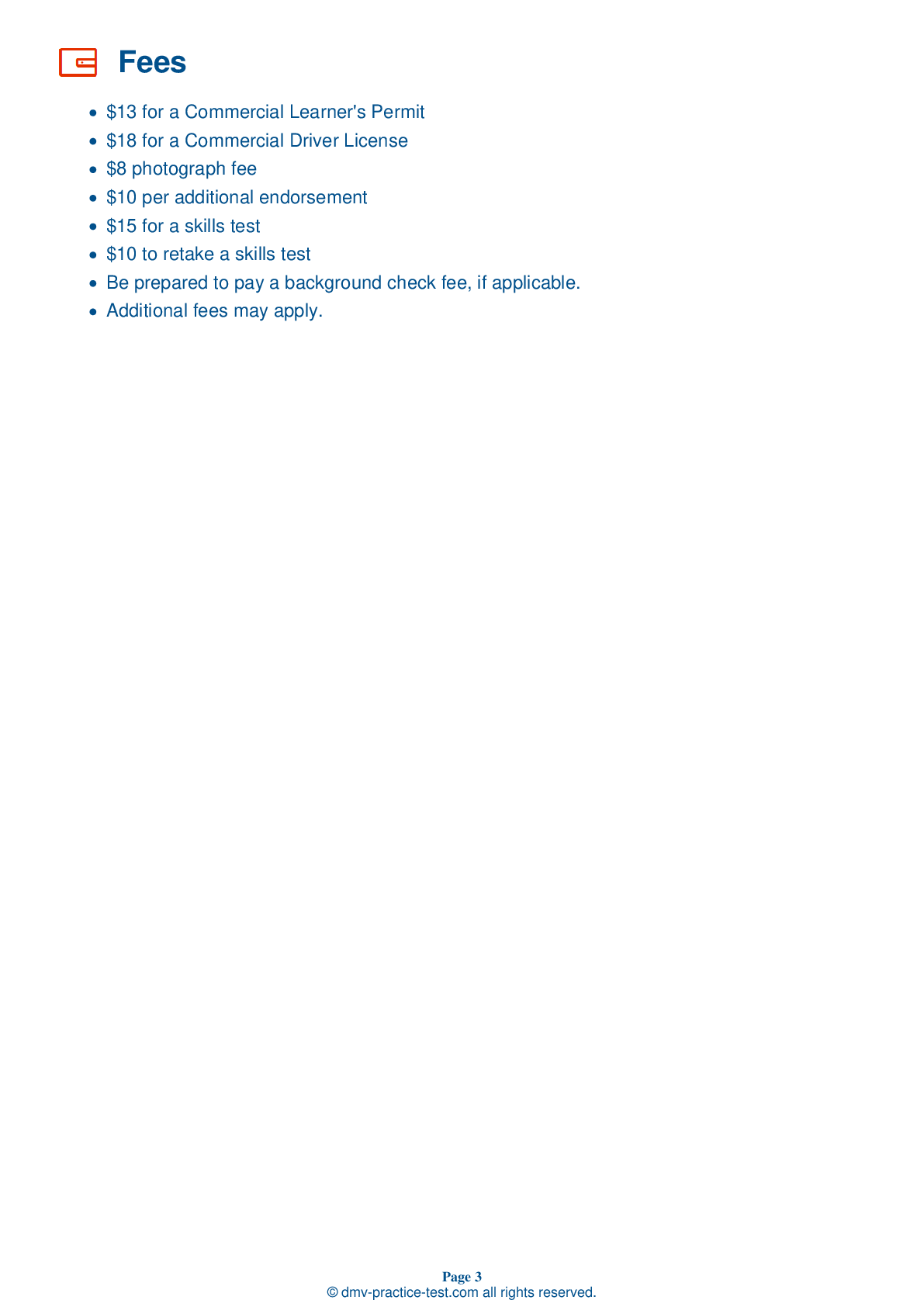Hazmat Test | Kansas 2025 #1 Page 5 of 5
On our website, we provide FREE practice - CDL hazmat test online! The official exam test consists of several obligatory parts, with all of them checking your knowledge of different blocks of road rules. If you need to obtain a KS CDL hazmat endorsement in 2025, practice as much as possible. Free sample tests published on our website will help you check and improve your knowledge and boost your grades. Please bear in mind that Kansas requirements for issuing a hazmat endorsement for CDL may vary from those established in other states.
25 . To operate a vehicle that is used to transport hazardous materials, a driver must have:
You must have a commercial driver license with a hazardous materials endorsement before driving a vehicle of any size that is used to transport hazardous materials, even if the vehicle is not transporting hazardous materials at the time of operation.
26 . A driver should ensure that:
It is a good idea to compare a shipping paper to the applicable package markings and labels. Ensure that the shipper has included the correct basic description on the shipping paper and that it matches markings and labels.
27 . When you are seated behind the steering wheel, shipping papers should be:
When transporting hazardous materials, shipping papers should be kept in a pouch in the driver's side door, or in another location where the driver is able to easily reach them while their seat belt is fastened. The papers must be easily visible to anyone who is entering the cab.
28 . If you are transporting Class 3 flammable liquids and your cargo needs to be moved into another tank, the flammable liquids:
Flammable liquids should not be transferred from one vehicle to another on a public roadway, unless being moved due to an emergency. Always warn others of the hazards presented by the materials.
29 . The front of an enclosed trailer should:
When inspecting an enclosed trailer as a part of the vehicle inspection test, check the front area of the trailer for signs of damage, such as cracks, bulges, or holes.
30 . If cargo containing hazardous materials is leaking, the driver should:
In the event of a leak in a cargo of hazardous materials, do not continue to drive any longer than is necessary for safety. Continuing to drive would result in a larger area becoming contaminated. Instead, park the vehicle, secure the area, stay with the vehicle, and send someone to get help.
See the exact questions that will be on the 2025 Kansas DMV exam.
99.2% of people who use the cheat sheet pass the FIRST TIME
Lillian MCcranie explains how our CDL study guide was helpful in passing the exam and recommends it to everyone.
Cameron tells us how he purchased the CDL exam, and found it to be a useful tool which helped him pass the exam and find a job.



